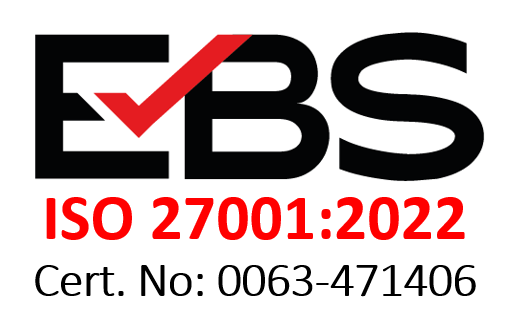10 Reasons Why EHS Risk Management Is Essential
What is EHS Risk Management?
What if a single overlooked hazard could cost your company thousands, or even result in lives lost? In today’s business world, that’s not just a possibility; it’s a growing reality.
In any organization, risks are an undeniable reality, especially when it comes to environmental, health, and safety concerns. However, risks can unexpectedly turn into accidents if they are not adequately mitigated.
Environmental Health and Safety Risk Management: Key Principles and Practices
Environmental Health and Safety Risk Management involves the identification, assessment, and mitigation of risks associated with environmental regulations, occupational health standards, and workplace safety laws. It is a structured approach used by organizations that formulates plans to eliminate any such risks.
The Growing Importance of EHS Risk Management in Modern Workplaces
Today, workplaces are more complex yet more vulnerable than ever before. Rapid Industrialization, digital transformation, and stricter environmental regulations have created more risks for modern workplaces than they did a decade ago.
From managing hazardous materials and heavy machinery to meeting sustainability targets and ensuring employee mental health, EHS responsibilities have expanded dramatically.
Companies are expected not just to comply with laws but to lead with purpose. Failing to manage EHS risks doesn’t just put workers and the environment at risk; it exposes businesses to legal, financial, and reputational fallout.
Companies now utilize AI computer vision to transform workplace safety by enabling real-time hazard detection, automated compliance monitoring, and proactive risk prevention. These advanced solutions help identify unsafe behaviors, detect the absence of personal protective equipment (PPE), and monitor environmental conditions, significantly reducing the chances of accidents and improving overall safety standards.
10 Powerful Reasons Why Risk Management is Important
If you think EHS risk management is optional, think again. Here are 10 powerful reasons why EHS risk management should be at the heart of your organization’s strategy.
1. Ensures Regulatory Compliance
Compliance with EHS regulations is non-negotiable. Failing to comply with these laws doesn’t just invite fines; it could result in shutdowns, lawsuits, criminal penalties, or loss of business licenses. That’s where EHS risk management becomes indispensable.
A well-crafted EHS policy ensures that your organization is fully aware of all applicable legal requirements and adheres to them through clearly defined processes and policies. It provides the structure to maintain thorough documentation, conduct internal audits, and stay ready for inspections at any time. More importantly, it gives you peace of mind that you’re operating not only legally, but responsibly.
With proactive systems in place, you can operate with confidence and in compliance with the law. Ultimately, it also demonstrates corporate responsibility to stakeholders and regulators.
2. Prevents Workplace incidents and Injuries
Workplace injuries, whether from a fall, chemical spill, machinery malfunction, or fire hazard, are almost always preventable. Most incidents are preventable if the right measures are taken at the right time.
Through regular risk assessments, safety training, incident tracking, and emergency response planning, your workplace becomes a safer environment where both employees and operations thrive. The outcome is not only a reduction in injuries and fatalities but also minimized downtime, fewer compensation claims, and improved morale. When workers know that their safety is taken seriously, they can focus on their tasks with more confidence and clarity.
3. Protects Environmental Sustainability
EHS risk management extends beyond people; it also protects the planet. Mismanagement of chemicals, waste, and emissions can have lasting negative impacts on ecosystems and public health. Increasingly, the public, investors, and governments are holding businesses accountable for their environmental footprints.
By integrating environmental controls into your risk management strategy, such as waste segregation, emissions monitoring, and spill containment, you demonstrate not only compliance but leadership in sustainability.
A strong EHS framework ensures your operations are environmentally responsible and aligned with sustainability goals. Moreover, EHS management also aligns operations with public expectations.
4. Enhances Operational Efficiency
EHS Risk Management minimizes disruptions typically caused by incidents and compliance issues.
It also encourages a preventative mindset that keeps everyone alert to inefficiencies and hazards before they escalate. With fewer disruptions and more stable workflows, organizations experience better output, lower costs, and improved service delivery.
When every team member knows their role in maintaining a safe environment, processes become faster, more predictable, and more cost-effective. Ultimately, EHS management enhances coordination and clarity in daily operations.
5. Builds a Strong Safety Culture
When safety becomes a shared value, everyone wins. When employees see that their employers consider their safety a priority, they are more likely to follow policies, report unsafe behaviour, and look out for each other.
EHS risk management cultivates a culture where every employee takes ownership of health and safety, leading to greater accountability and fewer errors. Safety becomes a core value and not just a simple rule. This leads to fewer violations in the workplace and stronger teamwork among employees.
6. Improves Employee Engagement and Retention
Employees want more than a paycheck; they also want to feel cared for and protected. They are more loyal when they realize that their physical and mental well-being is being prioritized.
A strong EHS strategy covers everything from physical hazards to mental health, ergonomic design, and work-life balance. These efforts create a more inclusive and caring work environment. Organizations that prioritize EHS demonstrate a genuine care for their people, which boosts morale, reduces turnover, and fosters a loyal, motivated workforce. Furthermore, these organizations are then able to attract top talent who seek safe and responsible employers.
7. Reduces Legal and Financial Liabilities
A single workplace accident can result in lawsuits, medical bills, compensation claims, and even criminal charges. These risks incur massive direct and indirect costs, including legal fees, property damage, lost labour hours, and increased insurance premiums. EHS risk management minimizes these exposures through timely reporting, thorough documentation, and preventive action.
With advanced solutions such as AI-powered monitoring, smart incident reporting, and real-time alert systems, businesses today can protect themselves not only from accidents but also from the legal fallout that often follows. At The Disrupt Labs, we empower organizations to automate and streamline their EHS risk management workflows, minimizing manual workload while maximizing protection and preparedness.


8. Facilitates Strategic Planning and Decision-Making
EHS risk management data is more than just a compliance requirement. EHS data provides critical insight into organizational weaknesses, risk trends, and areas needing improvement. From incident reports to risk assessments, EHS insights help leaders make smarter, data-backed decisions that improve safety and support long-term planning.
Artificial Intelligence (AI) can also be used for EHS management. Learn more about how to leverage AI for EHS Management in this article on Transforming Compliance and Risk Management in EHS with AI.
9. Future-proofs your Business Against Emerging Risks
As industries evolve, so do the risks. EHS risk management equips you to anticipate, adapt, and stay resilient in the face of unpredictable challenges. It enables you to strategise against any future challenges that your company may encounter.
AI Computer vision integration within the organization makes this job easier. It anticipates risks such as a lack of Personal Protective Equipment, improper use of forklifts, etc., and allows you to prepare beforehand. Ultimately, it builds resilience against unforeseen circumstances or crises.
10. Prevents Reputational Damage
In today’s hyper-connected world, reputation is everything. A single workplace accident, safety violation, or environmental mishap can make headlines within minutes, triggering public backlash, loss of customer confidence, and long-term damage to your brand image.
EHS risk management plays a vital role in safeguarding your organization’s reputation by proactively identifying and controlling potential threats before they escalate into serious incidents. When your company demonstrates a strong commitment to employee safety, regulatory compliance, and environmental responsibility, it builds public trust and credibility.
Conclusion
Workplace risks are real, and they’re not going away. Whether it’s an unexpected accident, a compliance issue, or an environmental challenge, managing EHS risks is essential to running a successful business today.
By investing in EHS risk management, you’re not just avoiding problems; you’re creating a safer workplace, building trust with your team, improving efficiency, and protecting your reputation. Simply put, it’s a smart move that pays off in the long run.
At The Disrupt Labs, we help businesses like yours turn safety and compliance into strengths. Our Computer Vision AI solutions are designed to make risk management easier, smarter, and more effective.
Ready to take your EHS strategy to the next level? Contact us today.
Frequently Asked Questions
EHS risk management refers to the process of identifying, evaluating, and controlling environmental, health, and safety risks in the workplace. It ensures organizations operate safely, comply with regulations, and protect both people and the environment.
It’s essential for preventing workplace accidents, ensuring legal compliance, reducing financial losses, and building a strong safety culture. EHS and risk management help organizations run more efficiently and responsibly.
AI automates hazard detection and area monitoring, ensuring compliance with safety protocols and minimizing workplace accidents by providing real-time alerts. AI-powered safety solutions help prevent accidents and increase operational efficiency.
Getting started is easy. Contact us today for a free consultation and see how our solutions can revolutionize your safety strategy.

